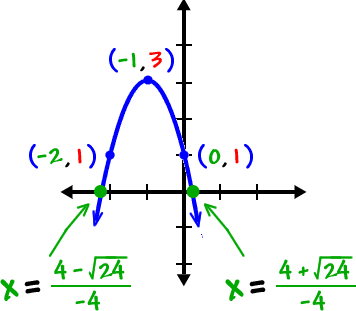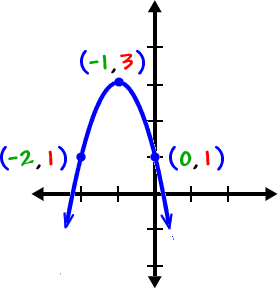Let's try another one:
| Let's graph | , label 3 points (like we | |
| did before) and find where it crosses the x-axis (these are called "zeros"): | ||
| Complete the square: |

| Graph it and label three points: |
|
|
|
| Find the zeros: |
*set it =0 and solve
![]()
We'll have to quadranate this one:

Do these values make sense with our graph?

YES!

